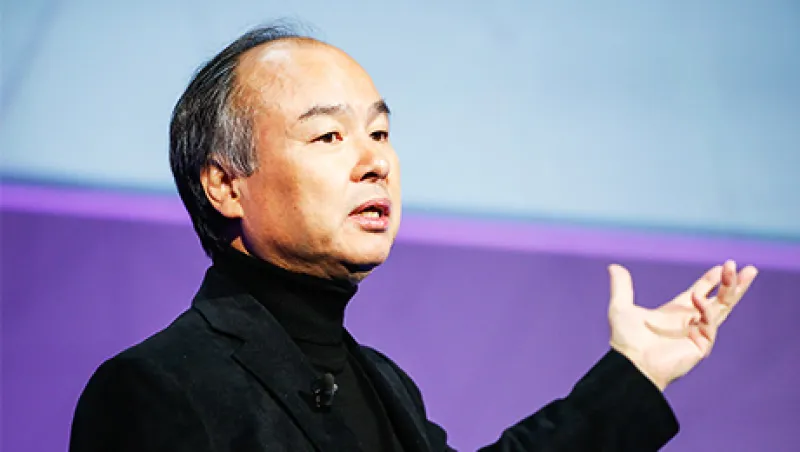Some investors aren’t waiting around for the performance of mass market lending to improve.
Private equity firm Silver Lake and Japanese asset manager SoftBank Group were part of a group that this month agreed to invest $500 million in Social Finance, or SoFi, an online lender that started as a refinancer for student loans and is rapidly morphing into a private bank for Silicon Valley’s newest recruits. The latest round of funding created a $4 billion valuation for the company, according to the Wall Street Journal. Silver Lake and SoftBank declined to comment on their investment in SoFi, which has been one of the most consistently profitable online lenders.
Whereas Lending Club, Kabbage, and SoFi have been hot spots for investors looking to bet on “fintech,” the budding online lending sector has seen some tough times. Last year investor confidence in online lending declined sharply amid a federal regulatory probe of Lending Club and middling loan performance in the industry. To help improve performance, online lenders scaled back the number of loans they provided in the second half of 2016, narrowing credit standards to limit those that were high risk, according to U.S. data provider Orchard Platform Advisors.
SoFi’s model diverges from other online lenders in a few significant ways. Rather than ignoring traditional financing structures entirely, SoFi melds them with technology to create a high-tech private bank for borrowers with Silicon Valley sensibilities and high salaries. Borrowers who work with SoFi to refinance student debt are offered career counseling, mortgages, and wealth management services as a way to keep them with the company.
“SoFi is really using student loans to surface the future 1 percent by getting them at the point of the student loan and then offering them financial products for the rest of their lives,” explains Brendan Ross, CEO of La Cañada Flintridge, California–based Direct Lending Investments, a $940 million hedge fund that provides credit to online lenders and invests in them.
SoFi recently reinforced two big traditional banking pillars of its business: savings and checking accounts and mortgage lending. The fintech firm announced February 1 that it had bought a mobile banking start-up Zenbanx , a deal that gave SoFi the platform it needs to start offering products that look and operate much like traditional checking and savings accounts. Also in February, Fitch Ratings agreed to add SoFi to its mortgage origination reporting. Fitch had already said in December that it would rate SoFi’s first issuance of residential mortgage-backed securities.
“SoFi’s issuance in 2016 had an average FICO of 777, so that tends to equate to good performance,” said Roelof Slump, a New York–based managing director at Fitch. FICO scores provide a measure of consumer credit risk.
It’s no surprise then, that high-profile private equity names are lining up as investors. But it’s also different from the egalitarian hymnal that fintech largely sings from.
Companies like Lending Club, which was one of the early movers in the industry, started out by offering marketplace loans to almost anyone. The vast majority of the loans refinanced high interest rate credit card balances down to something more affordable or paid off other consumer debts. That model allowed online lenders to expand rapidly and catch the attention of institutional investors interested in private debt. But as Direct Lending’s Ross points out, that attention has led them to lower overall credit standards because they have too many investors and not enough high-performing borrowers.
Mass market lending platforms tend to bring in borrowers through a somewhat generalist approach: They rely on direct mail, web site ads, and other forms of advertising to get applicants. SoFi, by contrast, is crafting a proprietary deal flow network from its affluent user base.
“Without proprietary deal flow, it means that the worst offers are accepted every time, so the overall standard of the loan book starts to go down,” Ross explains.
When scouting for lenders for his fund, Ross looks for a a differentiated business model that benefits from proprietary deals and exhibits more consistent performance. One lender Ross invests in, for example, is available through doctors offices and offers direct financing for medical procedures.
As the industry matures and winners begin to emerge, the online lending Old Guard seems to be looking for its own proprietary angles to add value. Ross notes that Lending Club recently started working with investment bank Jefferies to strengthen its lending business. Lending Club management has said that it used last year’s pullback in lending to reinvest in operations.
“2016 was a year of investment in the company,” Tom Casey, Lending Club’s CFO, said in the company’s fourth-quarter earnings statement on February 14 . “We developed better internal processes, stronger controls, and a diversified investor base that will help us compete in the future.”






